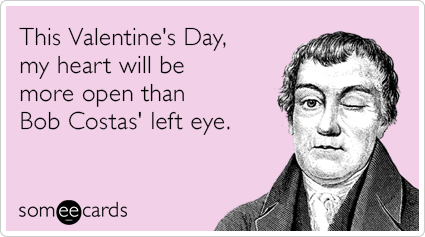Matador Network's Blog, page 2316
February 15, 2014
Ellen Page delivers inspiring speech
I WISH we lived in a world where the headlines that resulted from the speech given by actress Ellen Page above weren’t focused so much on her being gay. If you Google her name right now, you get something like this:
What if they were more like:
“Ellen Page says we need to love each other more”
“Ellen Page says let’s celebrate our beauty and not attack our differences”
“Ellen Page rails against bullying and pushes for acceptance”
Instead, we get “Ellen Page comes out as gay” — and that’s it. That’s the story. I can pull quote after quote from this speech that inspires me to treat people better and to be more loving toward my fellow humans. Quotes such as:
- There are pervasive stereotypes about masculinity and femininity that define how we’re all supposed to act, dress, and speak…and they serve no one.
- Loving other people starts with loving ourselves and accepting ourselves.
- We can do so much more together than any of us can do alone, and I hope that thought bolsters you as much as it does me.
But much of this message will be lost, overshadowed by her coming out, perhaps not by the LGBT community who is probably most inspired by her declaration, but by the majority of media consumers. If I had my way, this is the message we would be spreading:
“This world would be a whole lot better if we just made an effort to be less horrible to one another.” 
The post Ellen Page sums up world’s problems in one short sentence appeared first on Matador Network.

This map shows how much snow it takes to cancel school where you live

Photo: atrubetskoy
THE UNITED STATES has been pummeled by a series of storms this winter. While many people in New York (including myself, after just digging my car out of two feet of snow) are sort of all, “What’s new?” places such as Charleston, South Carolina, have shut down the entire city more than they’ve ever done in previous winters, just for a few flakes. This map, depicting how much snow it takes to close school across the US, would have been awesome to have as a kid. Check out map creator atrubetskoy’s Reddit post for more regionally-specific information. 
(H/T Unofficial Networks)
The post This map shows how much snow it takes to cancel school where you live appeared first on Matador Network.

When the traveler settles down

Photo: Silvia Sala
Wade Davis is describing the Sacred Headwaters, his words rolling like the wave trains of the Stikine. “Fidelity to place,” he says and I feel that longing, that insatiable ache.
I have never had that fidelity to place. My life has been dedicated to the art of packing, to storage units and cardboard boxes. I have been pulled to go, but never to stay.
Wallace Stegner writes about this. In Angle of Repose, he explores the impact of a people who have never learned to be loyal to place. Not to a country, but to the land, to its rocks and rivers, the cracks of its sun-beaten soil. “We have lived too shallowly in too many places,” he says.
I write about this again and again and then I write about it some more. Because now I am in Colorado and my hands reach for the landscape, feeling out the mountains like braille. For the first time in my life, I have found a place I can’t resist. The Flatirons have become a permanent fixture in my view of the world. If I left now I would close my eyes and feel their shadows across my face for the longest time.
I knew Colorado was home before the floodwaters came, before the water spread out over the Front Range, blanketing the trees and the rocks and the drowned prairie dog curled to one side. The water receded and they stayed and so did I.
Home has always been wherever my key unlocked a door. Now it is the flat rock at the side of the creek, the Canada geese on the frozen pond. It is pink clouds and clusters of columbine, a fierce wind and an arid climate. My lungs ache, my skin is always dry. I wake up thirsty. I expect blue sky. Home is a dozen moments throughout the day where my eyes catch the mountains and I forget whatever it is I meant to say. It is the sound of snow, the scent of the creek, the storm clouds spilling into the plains.
I love the mountains; I love living at their feet. I love their folds and contours, the way the snow gathers, collecting in pockets, sliding off of ridges. But there is still that shadow of sadness; it falls across my heart at the oddest times. It is an insatiable ache, a feeling that I can never be close enough, the realization that I will have to give it all up.
“Colorado,” I think, “I will never leave you.” And there is a sadness in that, too.
In River Notes, Wade Davis writes about the Havasupai, about their custom of burning the belongings of the deceased to dissuade their spirits from returning, to keep them on their spiritual path. I try to imagine what my family would burn, what would lure me back to the land of the living. And I know that it is the land itself. The scent of sage would haunt me. The hush of a snowstorm would tether my soul.
My heart preemptively pines for these things I cannot carry, these things they cannot burn. The snow cascading from low hanging clouds, the mountains rising overhead. My heaven is here. It is early morning climbs, skis sliding through the snow. It is clouds glowing like embers. It is a purpled mountain silhouette. It is the silence of two people walking alone when the world is asleep. I would come back for that.
This is what Colorado has given me, a place to be still, a placed to be stirred up, a place to bend with the wind and sit with the earth.
When I listen to Wade Davis plead for the protection of the Sacred Headwaters, I hear what he does not say. He does not describe the mountains, the unbridled rivers, the meadows of this high plateau. He describes the people. “Fidelity to place,” he says and talks about his daughter, how this is her home and the place she belongs to. I have loved many places, but there is a distinct difference between loving something and belonging to it, and I wonder what happens when we lose our fidelity to place. Is it a slow collapse or a sudden shift? Is it the same as a dream deferred? Do we fester? Do we explode? Even nomadic peoples belong to the trails they travel. It is not the wind that moves them. They are not prisoners of their own restless souls. Their fidelity is to the land, to the patterns of place.
When my faded, worn-out depression nips at my heels, I crave the sound of Colorado and the mesquite color of the Mesa Trail. I go for long walks in the middle of the night. My mind is overactive and I find solace in walking across snowy fields. I love the silence, the snowflakes catching in my hair, one on the tip of my nose. There is no moon. An owl flies overhead. A new awareness trickles in.
“Colorado,” I think, “I will never leave you.” And there is a sadness in that, too. The shutting out of other possibilities, the closing doors of a thousand lives unlived. But fidelity is not chance. It is choice. I have loved many places, but I belong to only one.
At the end of his talk, Wade Davis invites the audience to visit his home, to explore their fidelity to place through his own. And now my eyes look north, to Canada, to a country that is not a place, but an endless winter. A season of silence that slips through the cracks of your heart, pushing everything apart and pulling it all together. When the spring comes, I will head north. I am desperate to see the Sacred Headwaters, to know the place John Muir called “a Yosemite 100 miles long.” I know it will tug at my heart. I know I will be moved and I will wish to belong to it. But I will hold Colorado in the way that I breathe. I will look at the Stikine and love it for the way it reminds me of the place I am from.
From now on, there will always be something calling me back. From now on, I will know what it is to belong. This place will always hold me, its roots have reached to the marrow of my bones. I am home. [image error]
The post Fidelity to place: When the traveler finally settles down appeared first on Matador Network.

February 14, 2014
BASE jumper in Whistler [vid]
IN 2008 Shane McConkey and Miles Daisher became the first BASE jumpers to launch off Whistler-Blackcomb’s Peak 2 Peak gondola. The gondola, which spans Whistler and Blackcomb mountains in British Columbia, holds world records for longest free span between towers (almost 2 miles) and highest point above ground (just shy of 1500 feet).
On February 6th this year, an unknown man performed the same feat with the help of a friend, in what seems to be a tribute to McConkey who died in 2009 during a stunt in the Italian Dolomites. Unfortunately, the jump was illegal (unlike McConkey’s and Daisher’s) and the pair caused expensive damage to the equipment — about $10,000 worth to the door’s locking mechanisms. The young woman was captured by police but they have yet to find the man; they both face charges of mischief over $5000. 
The post Insane copycat stunt at Whistler is going to cost BASE jumper [vid] appeared first on Matador Network.

This video might explain why you’re single this Valentine’s Day
VALENTINE’S DAY SUCKS when you’re single. It’s the absolute worst. And while some of the singlefolk among us are single because they just got out of relationships, are single as an active choice, or just haven’t met anyone right for a bit, there are also those who are single because they’re insanely picky and set ridiculous preconditions on the people they’ll even consider looking at in a romantic way.
That’s the message coming to you from Paul Gale Comedy this Valentine’s Day: you might be staying single for incredibly stupid reasons. Take love where you find it, people! Also, have a very happy Valentine’s Day, to singles, the couples, and the rare, lucky triples out there. 
The post This video might explain why you’re single this Valentine’s Day appeared first on Matador Network.

5 cities that deserve an Oscar
THE MOVIES NOMINATED for Academy Awards in 2014 distinguished themselves not only through remarkable acting performances, smart screenplays, and groundbreaking visual effects — but also by their attention to place.
Many of this year’s nominees made their key settings into characters as vivid, beautiful, and emotional as the humans living and acting within them. Though they are unlikely to win any major accolades as the hectic Hollywood awards season draws to a close, the most expertly rendered cities in the best movies of 2013 were impossible to ignore.
1. Los Angeles in Her (dir. by Spike Jonze)
In only his fourth film in 15 years, hipster king and former music video wunderkind Spike Jonze finally made a film from his own original script. Her stars Joaquin Phoenix as a lonely, sensitive man who falls in love with his futuristic operating system (voiced by Scarlett Johannson).
For all the wisdom and emotion that Jonze wrings from his spectacular actors, his best accomplishment here is the near-dystopic Los Angeles where Phoenix’s Theodore Twombly lives. Colorful, urban, diverse, and brimming with light, the City of Angels has hardly ever seemed so full of opportunity, love, and eye-popping imagery. Jonze turns the beaches of Malibu into a heavenly rest-stop for Theodore and his beloved OS, Samantha, only to transform the dimly lit, foggy LA skyscrapers into prison-like domiciles. As a native Los Angelino myself, the richness and complexity of Jonze’s LA resonated with me.
2. San Francisco in Blue Jasmine (dir. Woody Allen)
What’s the best place to have a complete mental collapse? The answer is incontrovertible for anyone who’s seen Woody Allen’s newest “I make these every year” masterpiece, Blue Jasmine. Though the movie has been more heralded for its career-best performances from Sally Hawkins, Andrew Dice Clay, and Jasmine-on-the-verge-of-a-nervous breakdown (Cate Blanchett), it’s Allen’s use of the city of San Francisco that remains stuck in the memory.
In recent years, the same love that Allen lavished on his native Manhattan (Manhattan, 1979) has been transferred to some of the world’s other great cities: Paris in Midnight in Paris (2011), London in Match Point (2005), and now, the magnificent Bay Area.
While Blue Jasmine can’t quite be called an ode to San Fran — in fact, the city is more like Jasmine’s Inferno than her Paradise — Woody and cinematographer Javier Aguirresarobe (who also shot Vicky Cristina Barcelona for Mr. Allen in 2008) use plenty of establishing shots, wide-open vistas, and city photography to place us in the world of the title character’s psychological illness. Sad though it may seem, the effect is a paradox: While falling into deep dread for Jasmine, we can’t help but start to love SF all over again.
3. New York City in The Wolf of Wall Street (dir. Martin Scorsese)
Sin, corruption, and greed find their home bases in the Wall Street of popular imagination. I can’t think of anyone better to bring this caricature of denigrated psyches and perverse behavior to an exotic, entrancing fever pitch than perennial Manhattan denizen Martin Scorsese.
In The Wolf of Wall Street, Scorsese locates the paradigmatic failure of the American Dream in the image of former convict and insider-trading stockbroker Jordan Belfort (Leonardo DiCaprio); and according to Scorsese, immorality has never looked so splendid. Wall Street beckons like the mouth of Mephistopheles to Belfort, his business partner Donny (TWO-TIME Oscar-nominee Jonah Hill — who’d have thunk it?), and their crew of raging, sweaty money-addicts.
A period piece of the highest caliber, Wolf of Wall Street makes New York City in the 1980s and ‘90s look like party central, cooler and more Quaaluded-out than any old history book would suggest.
4. Rome in The Great Beauty (La grande bellezza; dir. Paolo Sorrentino)
Just because a city has two and a half thousand years of history doesn’t mean you know it well. That’s the guiding principle of Paolo Sorrentino’s epic Fellini-esque satire, The Great Beauty, one of the Foreign Language Oscar nominees this year. Sorrentino and Italian photography legend Luca Bigazzi use the blasé attitude of Italian culture writer Jep Gambardella (Toni Servillo) as an excuse to meander through Rome with a camera, a small crew, and one of the best cinematography teams on the planet.
Gambardella’s Rome is almost as filled with vice and greed as Scorsese’s Wall Street, but Sorrentino barely acknowledges the city’s flaws. Instead, he and Bigazzi shoot astounding, long-take scenes at the Coliseum, the edges of Vatican City, multiple churches, and several ruined courtyards. The Great Beauty is indeed its namesake, taking meta to a whole new level with state-of-the-art stereographic photography in one of the most beautiful movies in memory.
5. Messenia, Greece in Before Midnight (dir. Richard Linklater)
Another Mediterranean destination comes to the fore in Richard Linklater’s Sundance hit Before Midnight, the third in a trilogy that includes 2004’s Before Sunset and 1995’s Before Sunrise. As Celine and Jesse — the lovable, intellectual couple played so realistically by co-writers Julie Delpy and Ethan Hawke — wander the Peloponnese countryside, their marriage cracks and strains under the weight of nearly two decades of love for one another.
But the same can’t be said for Messenia, which blossoms and grows in lushness with each long-take, each tracking shot, each moment outdoors. Linklater insists on so much natural light and beauty that, though the film might have the log-line of a drama, it feels bright, buoyant, and flushed with energy. 
The post 5 reasons we wish cities could be nominated for Oscars appeared first on Matador Network.

On smoking weed in North Korea

Photo: Wiros
North Korea is a world apart from Western culture. This Hermit Nation’s famous distrust of global communications — along with its refusal to join the free market of information — have had the inevitable effect of allowing outsiders’ rumours to flourish.
The popular claim that cannabis is legal to buy and smoke in North Korea is just one such erroneous assertion. Nevertheless, it’s an assertion I once made myself; and it had seemed, in fact, the only logical explanation when I happened upon the plant sold freely at a market in a rural northern province.
As is generally the case with tours to North Korea, I had visited as part of a group. However, this was no ordinary group. Some of my contacts in the tourism industry — regular visitors to the DPRK — were putting on a ‘staff outing’ of sorts…and I’d been invited along for the ride.
The details of the tour — as well as my own reflections on visiting the country at a time of seemingly imminent war — are the subject of my post on the 2013 Korean Crisis. What follows here are the parts I left out.
Rason market
One of our Korean guides — a Mr. Kim[1] — was claimed to represent North Korea’s own Ministry of Foreign Affairs, and having him around ended up unlocking doors for us, doors which usually remained firmly closed to tourists. On the standard North Korea tour package, a group will be allotted two Korean guides. It’s their job to keep you in line — a job which they usually handle with a cheerful yet firm approach:
Don’t go in there.
Don’t photograph this.
I can’t answer that…but wouldn’t you rather hear about our Dear Leader’s birthday celebrations?
Fearful of getting into trouble with their superiors, most North Korean guides err on the side of caution. They’ll impose a blanket ban on photography from the tour bus, and if there’s ever any doubt the answer will invariably be “no.”
Our Mr. Kim was able to speak with confidence, though. When he answered in the negative it was absolute; but there were plenty of other occasions when he’d be able to flash his ID card, or call ahead to authorise our entry into restricted areas.
One of the first places we were to visit was the local bank.
As we arrived, two Korean girls in makeup and high heels were struggling to carry a sports bag, heavy with banknotes, to the back of a waiting taxi. Inside the building security seemed slim, and rather than through a reinforced glass counter, business was conducted in one of a series of simple offices.
We queued up to change our Chinese Yuan into the local currency: North Korean Won. I was aware just how unusual this was; the majority of tourists in the DPRK will be spending Chinese or US currency, and are usually restricted from handling the local notes. With an exchange rate of roughly ₩1,450 to £1 (or ₩900 to $1), the notes were numbered into the thousands. Different denominations bore the face of President Kim Il-sung, an image of the president’s birthplace at Mangyongdae-guyok, the Arch of Triumph in Pyongyang, and, on the ₩200 banknote, a likeness of mythical flying horse, Chollima.
Carrying roughly one quarter of a million Won between us, we headed down to the market. Up until a few years ago, Rason’s market was off-limits to tourists for a long time; a friend in the company told me the closure followed an incident in which a Chinese tourist was pick-pocketed. He had reported the theft to his embassy, and pushed for recompense from the North Korean tourism industry. As a result of the international drama which followed, North Korea decided it would be simpler not to let foreigners enter the market at all.
Mr. Kim made a few calls, and pretty soon we were heading inside. We were urged to leave our wallets on the bus, instead taking a handful of local banknotes concealed in an inside pocket. Cameras were also strictly forbidden.
It turned out to be exactly what we first suspected: a veritable mountain of marijuana.
The market was a sprawling maze of wooden tables, overflowing with everything from fruit to hand tools. Immediately upon our entrance, a wave seemed to move through the crowd as several hundred pairs of eyes turned to assess the intrusion. If the streets of Pyongyang and other North Korean cities may appear empty, even desolate at times, this place was the exact opposite…and I was struck by the sense of having stumbled across that fabled thing which seems so hopelessly impossible to find: the ‘real’ North Korea.
As our group separated, moved through the stalls, and began to mingle with the bemused locals, our Korean guides floated about us like owls on speed. In situations like these, there is much scope for speculating the punishment that would await them (and according to some, by association, their families) were they to lose sight of their Western wards. Luckily for them, however, we didn’t exactly blend in.
It was interesting to see the range of reactions that our presence elicited from the unsuspecting people of North Korea. Some gasped in shock, covering their mouths and nudging their friends to look at us; children waved, giggled, shouted “hello” and then ran away; vendors called and beckoned us to browse their wares. Everywhere I looked there was a movement of heads turning quickly away — everybody here wanted a good look at the strangers, but most couldn’t hold our gaze.
One elderly man in a tired military uniform followed us through the market, scowling from a distance. Several times I felt tiny hands patting at my trouser pockets, then turned, to see dirty-faced children peering out from the crowds. On one occasion I was confronted by an actual beggar — it’s still the first and only time I’ve seen a North Korean ask a foreigner for money, and something which the DPRK leadership does its absolute best to stamp out.
I yearned in pain for my camera, my shutter finger itching like a phantom limb.
At one point we bumped into a few of the girls from the massage parlour we’d visited in Rason. They stopped browsing to chat with us, and, for just the briefest of moments, I could almost have believed this wasn’t the strangest place I had ever been.
Things were to get a whole lot stranger, though, as we approached the covered stalls at the heart of the market. While the outer yard had been stocked with fruits, vegetables, and all manner of seafood, Rason’s indoor market is a repository for every kind of bric-a-brac you could care to think of…most of it imported from China.
Shoes, toys, makeup, lighters, DIY tools that look around 40 years old, clothing, military uniforms (which we were forbidden from buying), spices, chocolates, soft drinks, dried noodles, bottled spirits, beer, and a whole aisle lined with mounds of dry, hand-picked tobacco.
We were just walking past the tobacco sellers when we spotted another stall ahead, piled high with mounds of green rather than brown plant matter. It turned out to be exactly what we first suspected: a veritable mountain of marijuana.

Photo: Author
In the name of scientific enquiry, it seemed appropriate to buy some…and the little old ladies running the stall were happy to load us up with plastic bags full of the stuff, charging us roughly £0.50 each.
The natural conclusion was that it was legal to buy here. We decided to test the theory, purchasing papers from another stall before rolling up and lighting comically oversized joints right there in the middle of the crowded market. Bizarre as the situation was, it seemed a reasonably safe move — and with several hundred people already staring at us, we weren’t going to feel any more paranoid than we already were.
At another stall we bought live spider crabs for our dinner, before leaving the market to continue the grand tour of Rason — with just one difference. From this point onward, every time our group was walking on the street, sat in a park, or was being shown around some monument or other, there would be at least two fat joints being passed around.
Later that day, we visited a traditional Korean pagoda situated in a nearby village.
“This monument celebrates the fact that our dear leader Kim Jong-il stayed in this very building during one of his visits to Rason,” our Korean guide was telling us.
“Far out,” someone mumbled in reply.
Getting high on the bad times
That night we settled down for a meal at a private dining room in the Kum Yong Company Restaurant. It’s one of Rason’s tourist-friendly eateries, by which I mean that the service and surroundings had been so carefully and thoroughly Westernised as to give little or no impression of how real locals live. I guess the same could be said for five-star hotels the world over, though.
One member of the group was celebrating a birthday, and the cake was the first thing to reach our table. This was followed by the usual selection of hot and cold platters (kimchi, salad, fried eggs, battered meat and bean sprouts), while the kitchen prepared the crabs we had bought from the market earlier.
All this time we were rolling joint after joint, without tobacco, and the air in the room was thick with sweet, herbal fumes. In fact, coming back from a trip to the facilities I was almost unable to find my chair again — until my eyes grew accustomed to the severely reduced visibility.

Photo: Author
Once or twice the waitress came by to collect plates, and, coughing, made mock gestures of trying to sweep the clouds away with her hands. She didn’t mind at all, but rather seemed perplexed how something so commonplace could cause such unprecedented excitement.
In the corner of the room, a small television set was doing all it could to keep us abreast of important current affairs. The news presenter — an impassioned middle-aged woman with immaculate hair — was talking about a potential attack from South Korea, about US manoeuvres on the Korean Peninsula. Suddenly I remembered that I was in a country threatening to launch nuclear warheads against its neighbours, and that the whole world was holding its breath to see what the next days would bring.
The news programme came to an end, and was replaced by a film in which a Korean girl roamed the mountains in a fierce storm, looking for her lost goats. The waitress brought more beers, shots of the local rice wine known as soju, and someone passed me a joint. I had already forgotten about the nuclear war.
It wasn’t until the next evening — the last night of our tour — that Mr. Kim decided to join us for a smoke.
We sat around drinking beers in a hotel bar, just across the town square from our own lodgings. Here the waitresses were taking it in turns to sing for us, clutching cheap Chinese microphones as they performed note-perfect renditions of one (party-approved) karaoke classic after another. Many of these songs had once been written to celebrate the anniversary of a military victory…while each of the North Korean leaders is given their own orchestral theme (check out the Song of General Kim Jong-un, for example).
It was a pop song called Whistle that really got stuck in my head, though, as it seemed to be on constant cycle during our trip — playing in shops, restaurants, and offices. That evening I’m sure we heard it at least half a dozen times, and the melody would come back to haunt my dreams for weeks to come.
Sat around a long wooden table, we were drinking beer with our Korean guides — who up until this point had eschewed the weed.
They seemed to be ever-so-slightly uncomfortable with our discovery of their special plant; no doubt aware of its legal status in our own countries, it was their job to make sure we saw a positive representation of the DPRK. I don’t think they had planned on chaperoning a giggling pack of red-eyed imbeciles around their country’s proud military monuments.
I sat next to Mr. Kim who, dressed in his usual dark suit and glasses, looked every part the intelligence officer. He was snacking on strips of dried fish to accompany his beer, and he offered me some. By way of a polite gesture I offered him a joint in return, very much expecting him to refuse it. Instead he smiled, winked, and put his arm round my shoulder as he started puffing away on the fat paper cone.
Things got even more bizarre when the Russians arrived — a group of dock workers from the Vladivostok region, currently on leave in Rason and keen to get some alcohol inside them. One of my last memories of the evening is of knocking back large tumblers of Korean vodka with a walking stereotype of a man; he had the arms and chest of a bear, a square head topped with a white crew cut, and a well manicured ‘Uncle Joe’ moustache…as well as a superhuman thirst for vodka.
The first time I visited North Korea, I saw the famous monuments in Pyongyang, walked along the Demilitarized Zone in the south, but remained very much aware of my distance from the world around me; I often felt as though trapped inside a bubble, which prevented me from any kind of real interaction.
Here in the rural northeast, however, far removed from the leader’s watchful gaze, things are very different. Chinese and even Russian contractors explore at their leisure, while Western tour groups are allowed far more freedom than anywhere else in the country. [image error]
For a comprehensive critique of the unusual situations described in this report, check out Smoking Weed in North Korea: A Critical Review.
This post was originally published at The Bohenmian Blog and is reprinted here with permission.
Our tour guide’s name was not, in fact, ‘Kim,’ but I felt it better not to implicate him too closely in this report. Considering almost a third of all North Koreans have the family name ‘Kim,’ however, this seemed a reasonable substitute.
The post On smoking weed in North Korea appeared first on Matador Network.

Top 14 ways to say I love you
YOU’VE LIKELY seen these cards pop up in your Facebook feed. someecards — whose tagline is “when you care enough to hit send” — have a way of calling things out like they are. They say what you really want to say, then they give you the chance to express yourself by sending a card. The below 14 someecards are their most popular Valentine’s Day cards for today. What are you waiting for? Head over there and send your sweetie one! 
The post Top 14 ways to say I love you in a way that you really want to say it appeared first on Matador Network.

Valentine’s Day in Paris, for cynics

Photo: Brooklyn Museum
I did not come to Paris for love; I came here for a TEFL certificate.
When I realized that Valentine’s Day coincided with my course, it hit me in the same way water droplets from air conditioners do when you walk down a busy urban street in the hottest of summer — gentle, and sordid. How nice, to be in this romantic city on this romantic day with Nat King Cole cooing “I Love Paris” in your head…but doing it alone is kind of like realizing that cool, refreshing splash of water is filled with bacteria.
“What makes you think you’ll spend Valentine’s Day alone?” My friend said, with part Sagittarian optimism and part annoyance with my routine self-deprecation.
I didn’t think — I just knew. I have nothing political against the $14.7 billion industry (in the US alone). In fact, I find a security and comfort in the principles of capitalism that I cannot find in love. I don’t even have anything personal against cute couples. Good for you, and please use protection. I just have a conviction, or more of a suspicion, that I will spend this Valentine’s Day and the subsequent ones in my life alone, or with a TV marathon and a bag of Flamin’ Hot Cheetos. I cannot tell you what this insecurity is based on — I am not a complete ogre, and I can sustain a conversation with some degree of poise.
I’m just cynical.
The dread that I brought over the Atlantic with me primed me to notice Valentine-isms with crude frequency. As I admired a picturesque basilica near the Latin Quarter, a canvasser poked me in the arm to hand me a flier for a couples deal at the nearby gym. Valentine’s Day prix fixe menus grace the tables of almost every bistro, brasserie, or café, weeks in advance. Not understanding the French, I once tried to order fois gras on a buckwheat crepe from one of these menus, which elicited a chuckle from the waiter. Macaron mogul Ladurée offers a special robin’s egg blue Valentine’s Day box, which I think looks childish, but would not mind receiving — I would eat the macarons in minutes and use the box to store business cards or keys or nail polish back home in New Jersey. I would justify holding on to it under the guise of utilitarianism, but would actually consider it a relic (of that Valentine I’ll never have).
It makes sense that one would want to spend Valentine’s Day in Paris, even pay for a tacky Valentine’s Day boat cruise on the Seine. What better way to pass the time you’ll spend on long museum lines than french kissing your valentine? Especially in a place where PDA is as de rigueur as a good pair of leather shoes. Oh, and it’s Paris. You don’t need to watch Paris Je T’aime a hundred times to know that romance is kind of a big deal here. And no matter how many times I refer to this culture of romance as sensationalist garbage — that real Parisians are quite shrewd — a part of me is waiting for my pessimism to be disproved.
Because isn’t cynicism nothing but fear with fancy armor? It’s a fear that you decorate with smart-ass comments, intelligent-sounding words, and judgmental looks. In a way, my cynicism has made me even more romantic — by believing that my odds are low, if something does happen, it’s more of a miracle and less of an occurrence. It’s a better story. But the price you pay for this better story is a weight that sits in your heart like an overburdened suitcase. Do you really need all that stuff, all that negativity, in order to be realistic? Maybe real life isn’t so dismal.

Photo: Author
The other day, I had to go to the Apple Store to buy a new charger. I couldn’t use an adaptor because one of the prongs on my plug was too big for the hole (which was not at all awkward to explain in broken French). I walked past the old bookstores of Saint-Germain-des-Prés, staring into windows at people reading old texts through magnifying glasses. The Haussman buildings in the wider streets looked regal, albeit decrepit, behind the multitude of naked winter trees. Google Maps told me I had arrived at the Apple Store, but what I saw in front of me when I looked up from my phone was the dazzling Louvre Pyramid. All this was part and parcel of running such a mundane errand. (I say part and parcel because I want to acknowledge that February 14th is also the anniversary of UPS, which, though not as cute, is something both optimists and cynics can nod to.)
I crossed the Pont-des-Arts (“the lover’s bridge”) last evening, with the intention of getting to the other side as quickly as possible, to avoid being asked to take a photo of some posing couple. But I stopped in my tracks when I noticed the color that the Seine had taken on at that time, right after the last yellows of sunset. It was a precarious blue, the kind you would only find in a Monet. The blue softened the reflections of the city’s lights, making them look not like reflections but like living things just under the water’s surface. I thought, how nice it would be if someone (preferably attractive, with teeth and a clean mental health record) were to stand next to me and share this vista.
But if not, then that’s OK too. [image error]
This post was originally published on February 14, 2013.
The post Valentine’s Day in Paris, for cynics appeared first on Matador Network.

We can learn from happy people

Photo: Severin Sadjina
Scandinavia is located as far north as Alaska. It’s cold, dark, damp, and dreary for nearly nine months out of the year. And when summer does come, it’s often plagued by overcast skies and drizzle.
Yet somehow, year after year, Norway, Sweden, and Denmark rank highest in GNH — “gross national happiness.”
Since it can’t be the weather, why are Scandinavians so much more content than the rest of us? After countless trips to Norway, weekends in Denmark, and spending the last three months in Sweden, here’s what I’ve come up with.
1. Scandinavians travel…a lot!
Like their Viking ancestors, hordes of Scandinavian backpackers and holidaymakers can be found around the world. In fact, the Norwegian government will actually send you on a two-week paid vacation if you’re feeling depressed.
Not only does traveling in the tropics help replenish much-needed vitamin D, but it also renews an appreciation for home, where education and healthcare is free, and the meatballs are always rolling.
2. They keep in touch with family and friends…
There’s a strong sense of connection, trust, and responsibility among family, friends, and even society at large that helps everyone through the good and the bad. According to the Prosperity Index of 2010, 74% of Norwegians believe others can be trusted, a good indicator of a relaxed and happy society.
3. …and nature.
They spend as much time as they can outdoors. Whether they’re water skiing under cold rains, dog sledding through blizzards, or hiking through blueberry fields, they appreciate nature and stay fit doing it.
4. They cook some delicious food.
Fish soup, fresh moose meatballs…Grandiosa frozen pizza? A lean fish and meat diet helps them stay healthy, and the frozen pizza adds just enough fat to weather the winter months. Try the Nacho extra-everything pizza!
5. Everyone’s really attractive.
It’s hard to feel bad when you look good. Not only are Scandinavians blessed with good looks, but they make an effort to look good as well. The best part is, none of them realize how beautiful they really are, making Scandinavia a great place to find a beautiful / handsome date.
As an old Norwegian once explained, “You know why Scandinavians are so good looking? Because we eat fish!”
6. They go to school for free.
Get this — all Scandinavians can get a BA, MA, and PhD for free within all of Scandinavia. And if you’re lucky enough to be Norwegian, the government will even cover tuition fees and provide a stipend to study anywhere in the world. That would sure make me happy.
7. They get three months of sun.
Summer is often pretty rainy, but when the clouds do part the sun can shine all day and all night, depending on how far north you are. Scandinavians take advantage of this by sleeping less, partying more, and picking wild berries till the break of dawn.
8. They take advantage of the cold.
Unlike Americans, who perfect the art covering themselves with blankets of homegrown fat, Scandinavians are just as active in the winter as they are in the summer. Downhill and cross-country skiing are favorites, as well as dog sledding, riding bikes through blizzards, and passing out drunk in the snow. Because, as a Norwegian once said to me, “There is never bad weather, only bad dressing!”
9. They drink a lot…
Like much of Northern Europe, Scandinavians drink a lot. It helps numb them through all those family dinners and against the cold. But although they often drink until they perspire alcohol from every pore, they usually only do so on the weekends, leaving them to be healthy and productive through the workweek. Now that’s a society of productive alcoholics.
10. …and have sex…a lot!
According to Aftenposten, a Norwegian newspaper, Norway has one of the highest rates of one-night stands, followed closely by Denmark and Sweden. Why haven’t I ever had a one-night stand in Scandinavia!?
Conclusion
Based on Norway, Sweden, and Denmark, the equation for happiness goes like this: Perspective-inspiring travel + much-needed sun + strong social network + lots of booze + more sex / harsh winters full of skiing = Nacho Pizza bliss.
That didn’t make much sense, but I know frozen pizza has something to do with it. [image error]
This post was originally published at Runaway Guide and is reprinted here with permission.
The post 10 things we can learn from the happiest people in the world appeared first on Matador Network.

Matador Network's Blog
- Matador Network's profile
- 6 followers




















